Abstract
The ability of cefamandole to cross osseous capillary membranes and its concentrations in interstitial fluid spaces are studied in canine cortical bone. Extraction studies were performed by using indicator dilution techniques and demonstrated that cefamandole readily traversed osseous capillary membranes. Volume-of-distribution studies demonstrated that cefamandole was distributed in the plasma and interstitial fluid spaces of cortical bone. There was a direct correlation between the calculated concentrations of cefamandole in the interstitial fluid spaces of bone and the simultaneous serum levels determined by bioassay in animals in which a steady-state equilibrium had been achieved. This suggests that the less expensive and more readily available serum bioassay technique is more useful than bone bioassays in monitoring the osseous concentrations of cefamandole.
Full text
PDF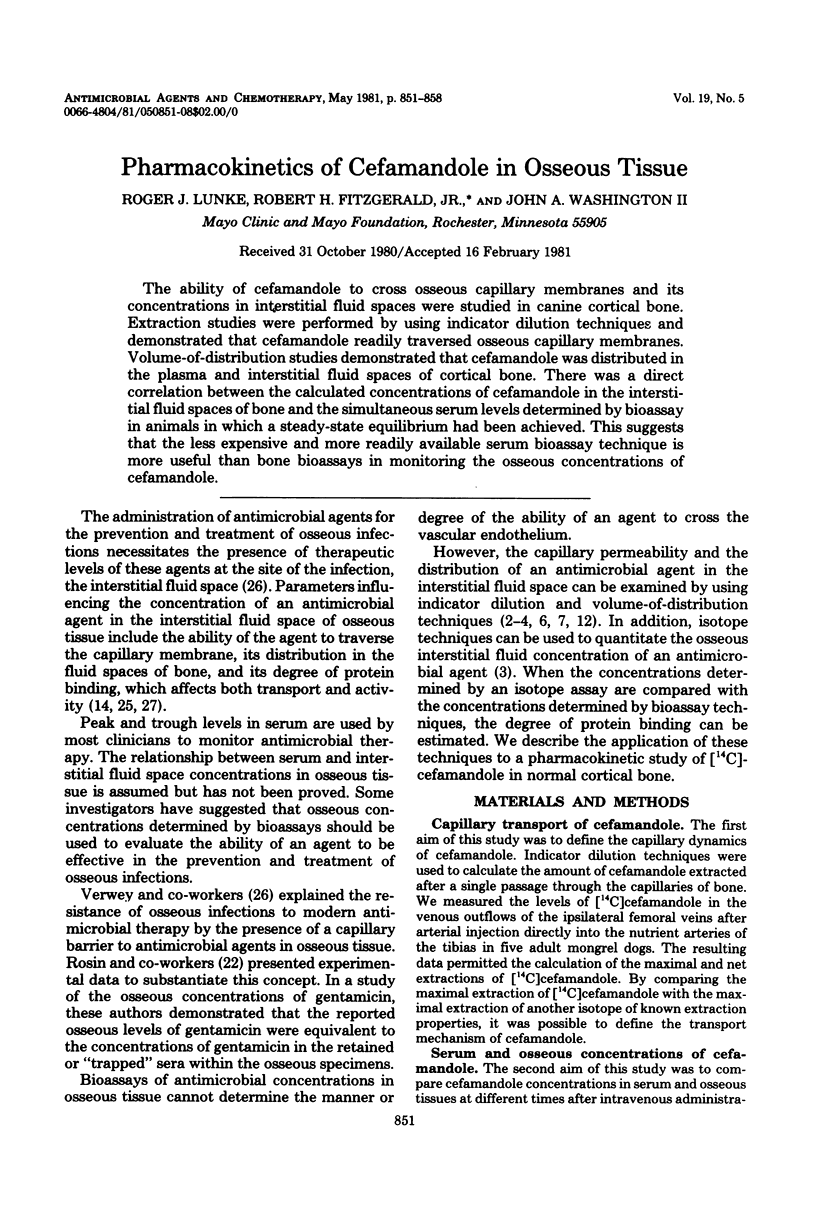
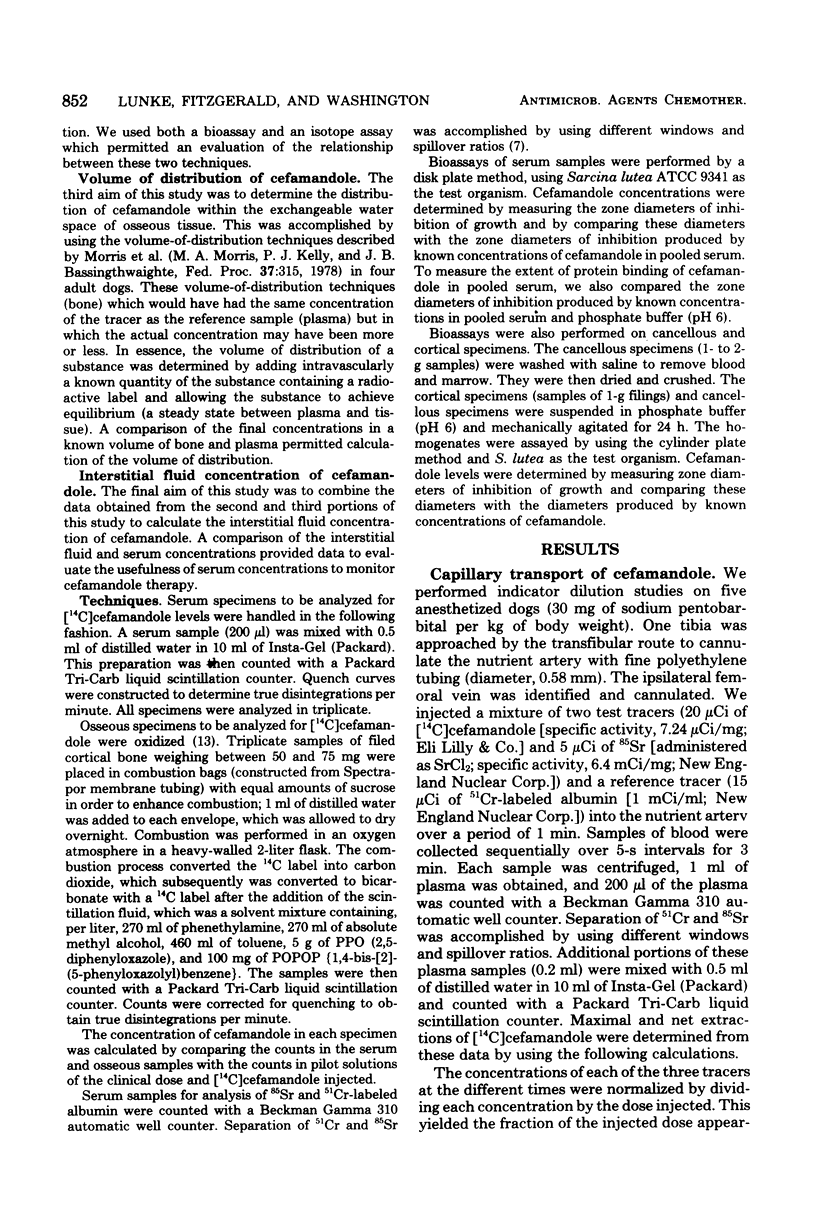
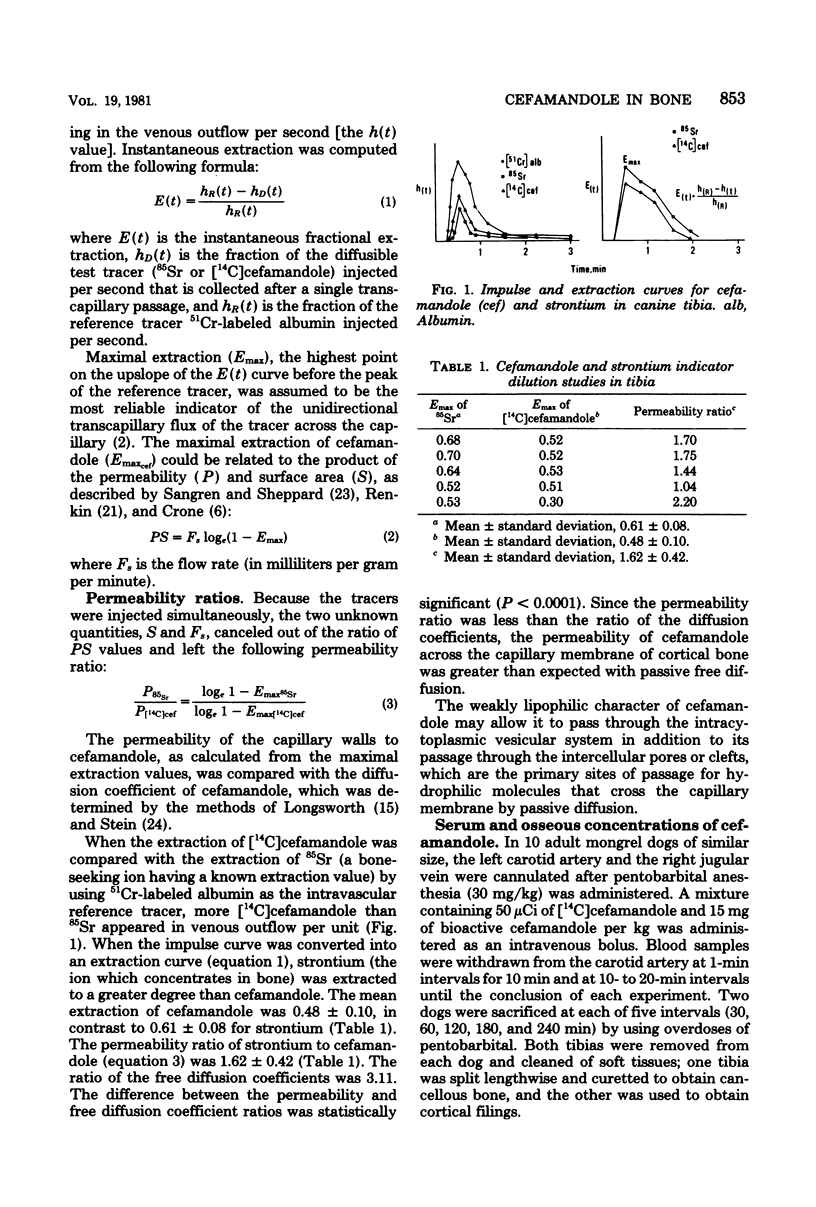
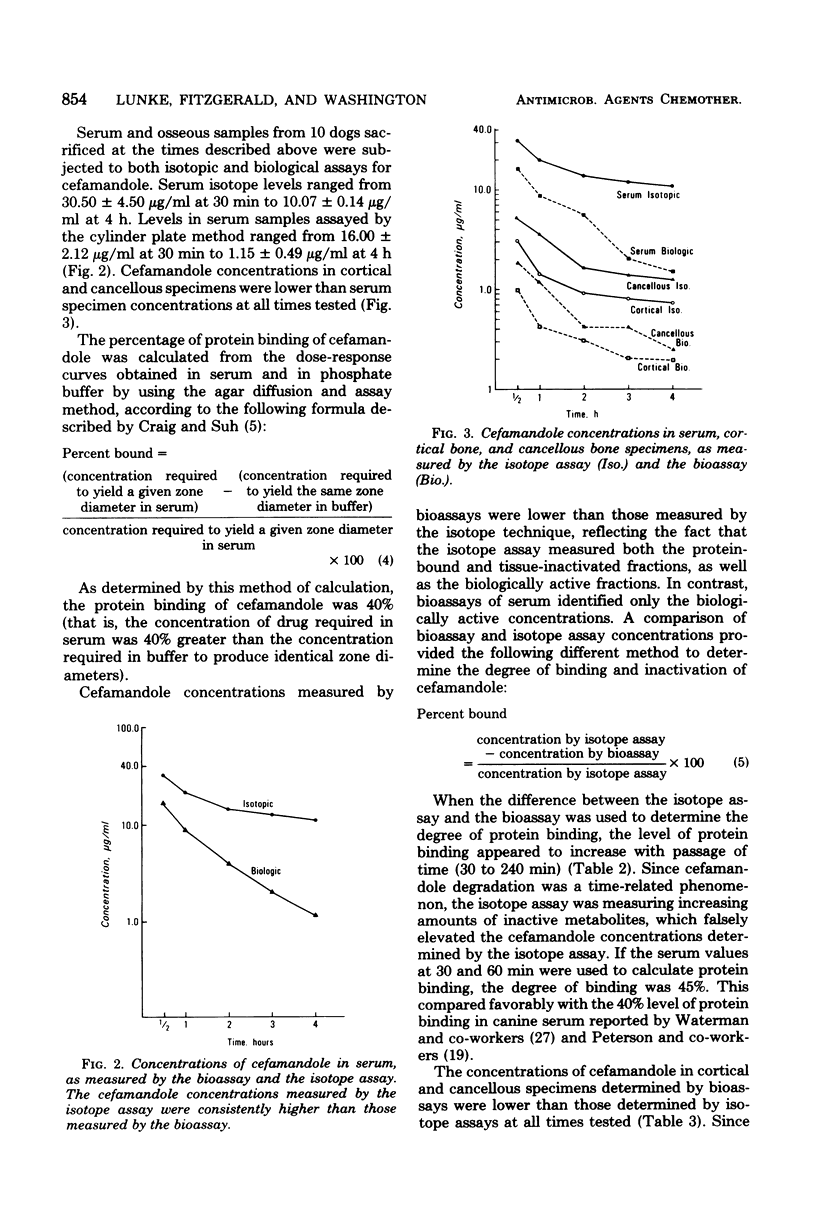
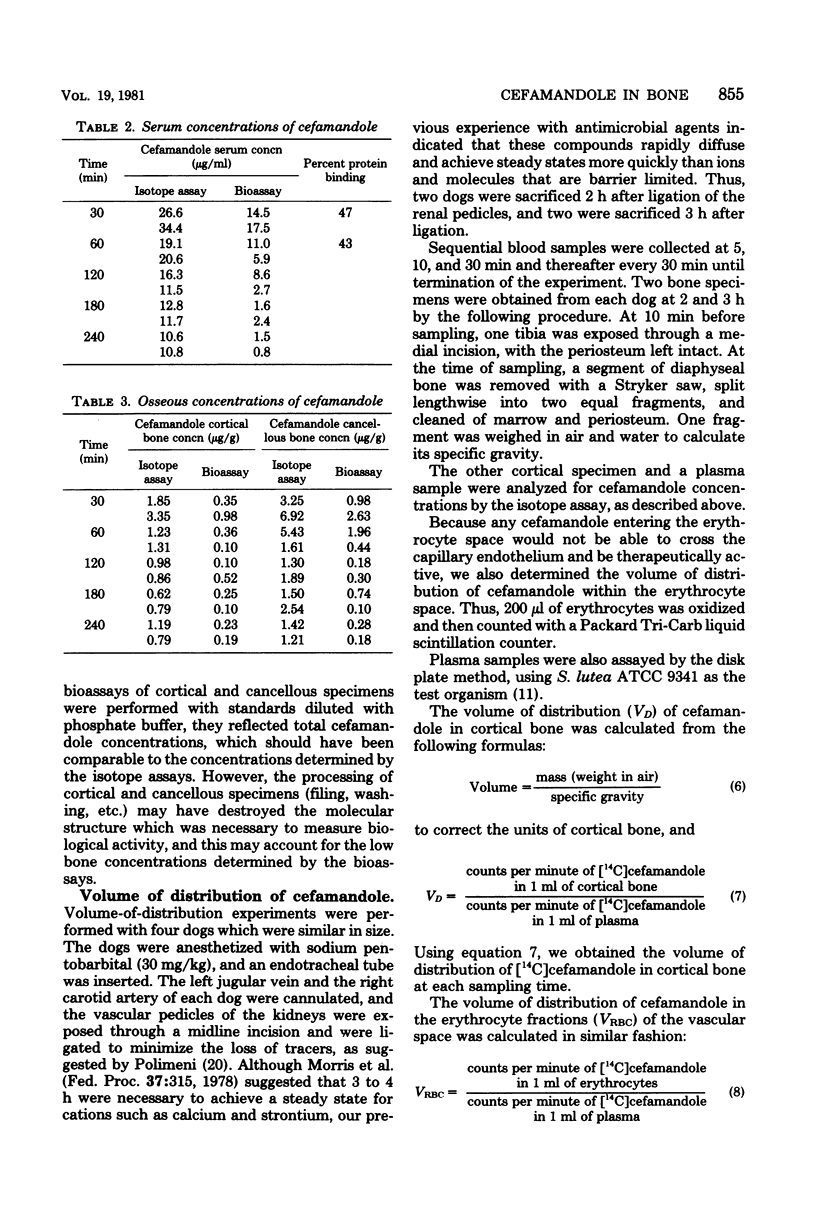
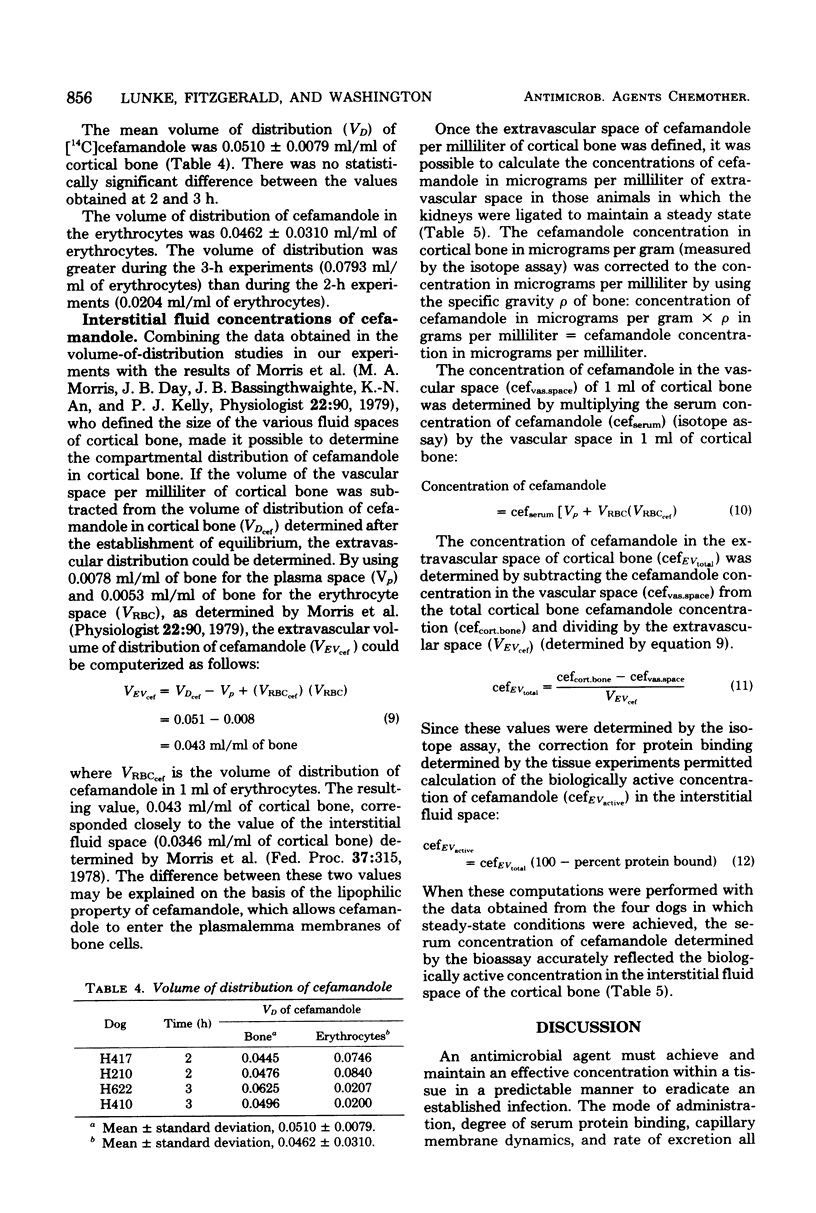
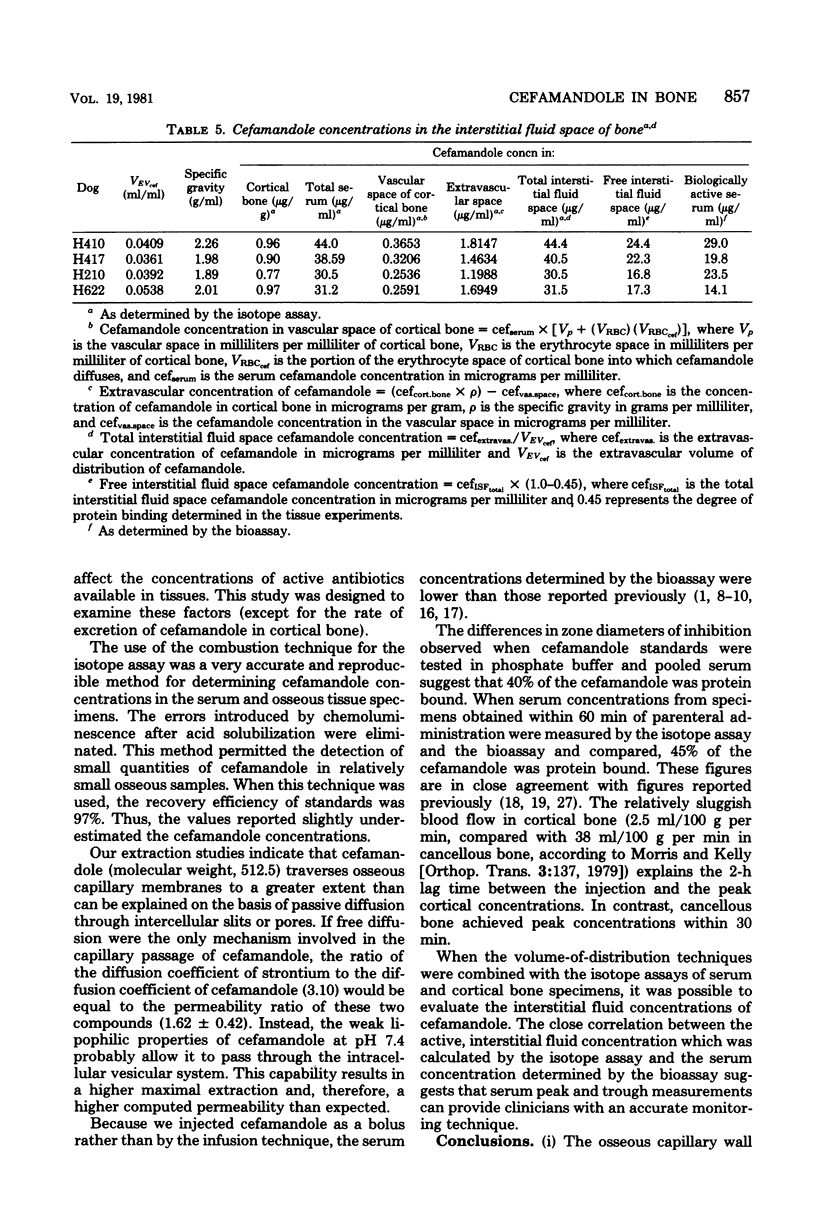
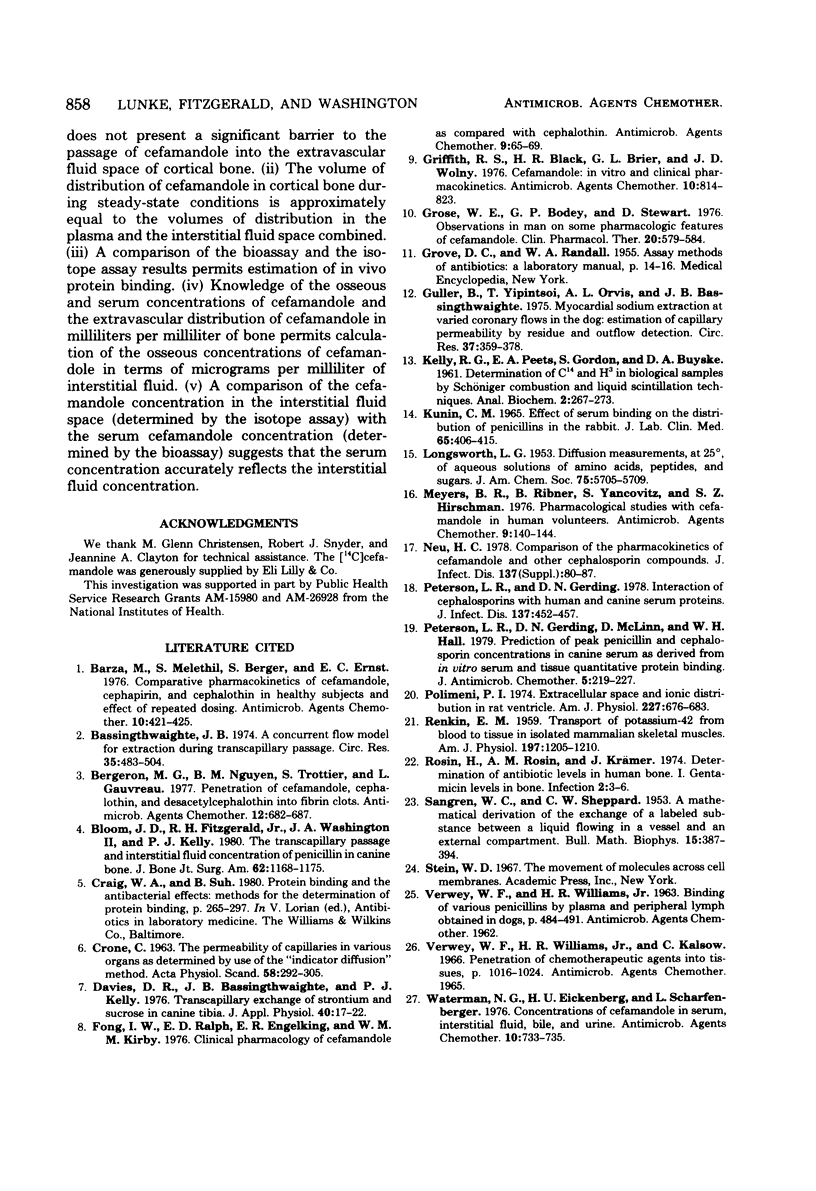
Selected References
These references are in PubMed. This may not be the complete list of references from this article.
- Barza M., Melethil S., Berger S., Ernst E. C. Comparative pharmacokinetics of cefamandole, cephapirin, and cephalothin in healthy subjects and effect of repeated dosing. Antimicrob Agents Chemother. 1976 Sep;10(3):421–425. doi: 10.1128/aac.10.3.421. [DOI] [PMC free article] [PubMed] [Google Scholar]
- Bassingthwaighte J. B. A concurrent flow model for extraction during transcapillary passage. Circ Res. 1974 Sep;35(3):483–503. doi: 10.1161/01.res.35.3.483. [DOI] [PMC free article] [PubMed] [Google Scholar]
- Bergeron M. G., Nguyen B. M., Trottier S., Gauvreau L. Penetration of cefamandole, cephalothin, and desacetylcephalothin into fibrin clots. Antimicrob Agents Chemother. 1977 Dec;12(6):682–687. doi: 10.1128/aac.12.6.682. [DOI] [PMC free article] [PubMed] [Google Scholar]
- Bloom J. D., Fitzgerald R. H., Jr, Washington J. A., 2nd, Kelly P. J. The transcapillary passage and interstitial fluid concentration of penicillin in canine bone. J Bone Joint Surg Am. 1980 Oct;62(7):1168–1175. [PubMed] [Google Scholar]
- CRONE C. THE PERMEABILITY OF CAPILLARIES IN VARIOUS ORGANS AS DETERMINED BY USE OF THE 'INDICATOR DIFFUSION' METHOD. Acta Physiol Scand. 1963 Aug;58:292–305. doi: 10.1111/j.1748-1716.1963.tb02652.x. [DOI] [PubMed] [Google Scholar]
- Davies D. R., Bassingthwaighte J. B., Kelly P. J. Transcapillary exchange of strontium and sucrose in canine tibia. J Appl Physiol. 1976 Jan;40(1):17–22. doi: 10.1152/jappl.1976.40.1.17. [DOI] [PubMed] [Google Scholar]
- Fong I. W., Ralph E. D., Engelking E. R., Kirby W. M. Clinical pharmacology of cefamandole as compared with cephalothin. Antimicrob Agents Chemother. 1976 Jan;9(1):65–69. doi: 10.1128/aac.9.1.65. [DOI] [PMC free article] [PubMed] [Google Scholar]
- Griffith R. S., Black H. R., Brier G. L., Wolny J. D. Cefamandole: in vitro and clinical pharmacokinetics. Antimicrob Agents Chemother. 1976 Nov;10(5):814–823. doi: 10.1128/aac.10.5.814. [DOI] [PMC free article] [PubMed] [Google Scholar]
- Grose W. E., Bodey G. P., Stewart D. Observations in man on some pharmacologic features of cefamandole. Clin Pharmacol Ther. 1976 Nov;20(5):579–584. doi: 10.1002/cpt1976205579. [DOI] [PubMed] [Google Scholar]
- Guller B., Yipintsoi T., Orvis A. L., Bassingthwaighte J. B. Myocardial sodium extraction at varied coronary flows in the dog. Estimation of capillary permeability of residue and outflow detection. Circ Res. 1975 Sep;37(3):359–378. doi: 10.1161/01.res.37.3.359. [DOI] [PMC free article] [PubMed] [Google Scholar]
- KELLY R. G., PEETS E. A., GORDON S., BUYSKE D. A. Determination of C-14 and H3 in biological samples by Schoeniger combustion and liquid scintillation techniques. Anal Biochem. 1961 Jun;2:267–273. doi: 10.1016/s0003-2697(61)80010-9. [DOI] [PubMed] [Google Scholar]
- KUNIN C. M. EFFECT OF SERUM BINDING ON THE DISTRIBUTION OF PENICILLINS IN THE RABBIT. J Lab Clin Med. 1965 Mar;65:406–415. [PubMed] [Google Scholar]
- Meyers B. R., Ribner B., Yancovitz S., Hirschman S. Z. Pharmacological studies with cefamandole in human volunteers. Antimicrob Agents Chemother. 1976 Jan;9(1):140–144. doi: 10.1128/aac.9.1.140. [DOI] [PMC free article] [PubMed] [Google Scholar]
- Peterson L. R., Gerding D. N. Interaction of cephalosporins with human and canine serum proteins. J Infect Dis. 1978 Apr;137(4):452–457. doi: 10.1093/infdis/137.4.452. [DOI] [PubMed] [Google Scholar]
- Peterson L. R., Gerding D. N., McLinn D., Hall W. H. Prediction of peak penicillin and cephalosporin concentrations in canine serum as derived from in vitro serum and tissue quantitative protein binding. J Antimicrob Chemother. 1979 Mar;5(2):219–227. doi: 10.1093/jac/5.2.219. [DOI] [PubMed] [Google Scholar]
- Polimeni P. I. Extracellular space and ionic distribution in rat ventricle. Am J Physiol. 1974 Sep;227(3):676–683. doi: 10.1152/ajplegacy.1974.227.3.676. [DOI] [PubMed] [Google Scholar]
- RENKIN E. M. Transport of potassium-42 from blood to tissue in isolated mammalian skeletal muscles. Am J Physiol. 1959 Dec;197:1205–1210. doi: 10.1152/ajplegacy.1959.197.6.1205. [DOI] [PubMed] [Google Scholar]
- Rosin H., Rosin A. M., Krämer J. Determination of antibiotic levels in human bone. I. Gentamicin levels in bone. Infection. 1974;2(1):3–6. doi: 10.1007/BF01642215. [DOI] [PubMed] [Google Scholar]
- Waterman N. G., Eickenberg H. U., Scharfenberger L. Concentration of cefamandole in serum interstitial fluid, bile, and urine. Antimicrob Agents Chemother. 1976 Oct;10(4):733–735. doi: 10.1128/aac.10.4.733. [DOI] [PMC free article] [PubMed] [Google Scholar]


